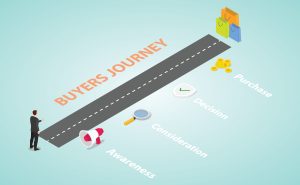What is User Experience?
If you have been thinking about updating your website, you may have come across the term ‘User Experience’ (UX) during your research. What does this term actually mean though, and how important is it to get the UX right in order for your website to convert visitors into customers? Let’s have a run through what User Experience means and some best practices that you can start implementing today.
What Is User Experience?
User Experience is all of the interactions that a potential customer has with your products or services online. Whether you have a brochure website or an e-commerce website, if users find the experience long, complex and complicated, they will leave your website and probably head to a competitor instead.
It is also worth mentioning User Experience Design. This is all about increasing user satisfaction by looking at things like the accessibility, efficiency and usability of your website. UX Design involves creating a website with the user in mind, so it is easy to use and not confusing. There should be a clear journey you want your visitors to take upon arrival to your website, from the second they land up until they have converted (either purchased a product or filled in a contact form).
User Experience vs Customer Experience
So you may be thinking, isn’t User Experience the same as Customer Experience? In essence, Customer Experience includes every single step of the customer purchase cycle, whereas UX only factors in how visitors have interacted with your website. Customer Experience also includes other channels that potential customers have used to interact with your brand – such as calling your sales team, engaging on social media etc.
Best Practices For Website User Experience
Whether you are looking to redesign your existing website, or are developing a new website, UX should be at the forefront of your mind from the very early stages. There are lots of best practices to follow, but here are our top 10:
Have a well-thought-out UX Design process
Planning your UX Design in advance can help to save valuable time and resources further down the line. In-depth research should be carried out, both from a quantitative and qualitative angle, paying particular attention to the complete user journey. The UX design process is not set in stone, you’ll find that you may alter parts as you continue optimising the website.
Everything begins with user research
A UX research plan is a really good place to start, and will not only form the foundation of the entire project, but will ensure all stakeholders are aligned. Some questions you may want to think about include:
- What do our customers want to see?
- How can we make their journey as seamless as possible?
- What can you do better than your competitors?
Understanding exactly what your users need will allow you to create a UX-centric website that fulfils their requirements.
Simplicity and consistency are key
Without realising, users evaluate the UX of a website in seconds upon arrival. If they can’t get the answers they need, or part of the website is broken, they will quickly leave. By having a simple UX design, users will be able to easily complete their actions.
Hierarchy is also something to consider when designing your website. Child pages should clearly follow on from parent pages, and having breadcrumbs on your website will allow users to backtrack easily should they need to.
Every page should have a clear goal, and the intent of each page should be clear as soon as users arrive. Any excess information, such as similar products or services, should be placed further down the page.
Forms should be carefully planned
Filling out forms is often painful and very time-consuming, so the simpler and quicker you can make this process, the better your conversion rate. Keep fields to a minimum, and only ask for data that is necessary… do you really need to know what they had for dinner last night?!
A recent study carried out by Baymard concluded that most sites can achieve a 20-60% reduction in the number of form fields they display by default, resulting in a significant checkout optimisation.
Focus on content
While a UX designer is clearly focused on the design and layout of a website, content is not something that should be forgotten about. Short, punchier paragraphs of text will keep your users engaged and on the website for longer. Try to avoid using jargon that will confuse users, and ensure your tone of voice is consistent across all channels (including social media).
High-quality images are also important, as this adds a professional feel to your website. They are also a great way to help explain the written text in further detail too.
Think about accessibility, a mobile-friendly & responsive design
We understand that there is a lot we are throwing at you here, so let’s break it down! Accessibility is about making sure that all your users, even those with disabilities, have a good experience on your website. This means that anyone using a screen reader to access your website can still access all the information they need for a simple checkout process.
Making your website mobile-friendly can not only help User Experience, but also improve your position on Search Engine Results Pages (SERPs) too as it is an important ranking factor. Mobile users should be able to interact with a single touch, and we recommend that your website is tested across multiple devices before being launched.
A responsive design means that your website will look the same whether it is being viewed on a desktop computer, laptop, tablet or mobile device. If your website isn’t responsive, users are likely to abandon it and go elsewhere.
Carry out regular user testing throughout the design process
Things don’t always go to plan when it comes to UX Design, but the only way you will realise this is by carrying out regular testing as you go through the design process. By getting the design right as you go along, this can speed up development work and reduce the risk of expensive redesigns later on.
A top tip here is to look at your website with a fresh pair of eyes. Bring in members of the team that haven’t been involved in the UX Design process, and get them to have a look through your plans. They may well spot something that you haven’t, simply because you have been working on the project so closely.
Navigation paths should be clear
A clear, well-planned navigation is obvious as soon as you land on a website. It also helps to make a great first impression, as users start building confidence with your brand. There is nothing worse than landing on a website and having no idea how to find a certain product… frustration can build up very quickly. Definitely not the experience you want to be giving your website users!
Regularly review page loading time
Just the same as carrying out user testing throughout the UX design process, technical testing should also be carried out. Page load speeds are incredibly important when it comes to User Experience, as if this takes any longer than 3 seconds, visitors will simply leave your website. Simple actions such as ensuring images aren’t too large, and thinking about how much content is on your website can help to reduce this.
Visitors should be able to quickly achieve their goals upon arrival to your website, without having to wait ages for it to load. A cool animation on the homepage may look amazing, but is it going to be detrimental to the overall speed of your website?
Use filters where possible
Whether you are designing a service-based or a product-based website, there is always an opportunity to add filters to improve the User Experience. This allows users to easily see exactly what they are looking for, without having to scroll through pages upon pages. Again, helping to make the UX more seamless.
Creating a positive User Experience is key to help build trust and loyalty with customers, which in turn leads to increased sales. Remember the customer sales journey is an extensive process, and every touchpoint you have with potential customers should count.
Sign up to our newsletter
Get regular hints, tips and updates on internet marketing and web design.
Related Articles
What Is The Difference Between User, Buyer and Customer Journeys?
It is understandable to think that a user journey, buyer journey, or customer journey are all interchangeable in the world of user experience and digital marketing. However, they are not the same thing but can all help to plan your website, implement digital marketing effectively, and successfully convert more leads. This article discusses the difference…
Read MoreKey statistics that prove the importance of user experience
User experience (UX) involves the entire experience the user has when they come into contact with a company. The term was initially created by Don Norman who was a co-founder of the Nielson Norman Group. He described UX in the following way: “User experience encompasses all aspects of the end user’s interaction with the company,…
Read MoreThe Importance of Responsive Web Design: Ensuring A Seamless User Experience
In today’s digital world, people browse the internet on all sorts of devices, from smartphones to tablets and laptops too. To provide the best user experience for your customers, your website should be responsive, which means that it adapts depending on the device being used to view it. Responsive web design is all about ensuring…
Read More




